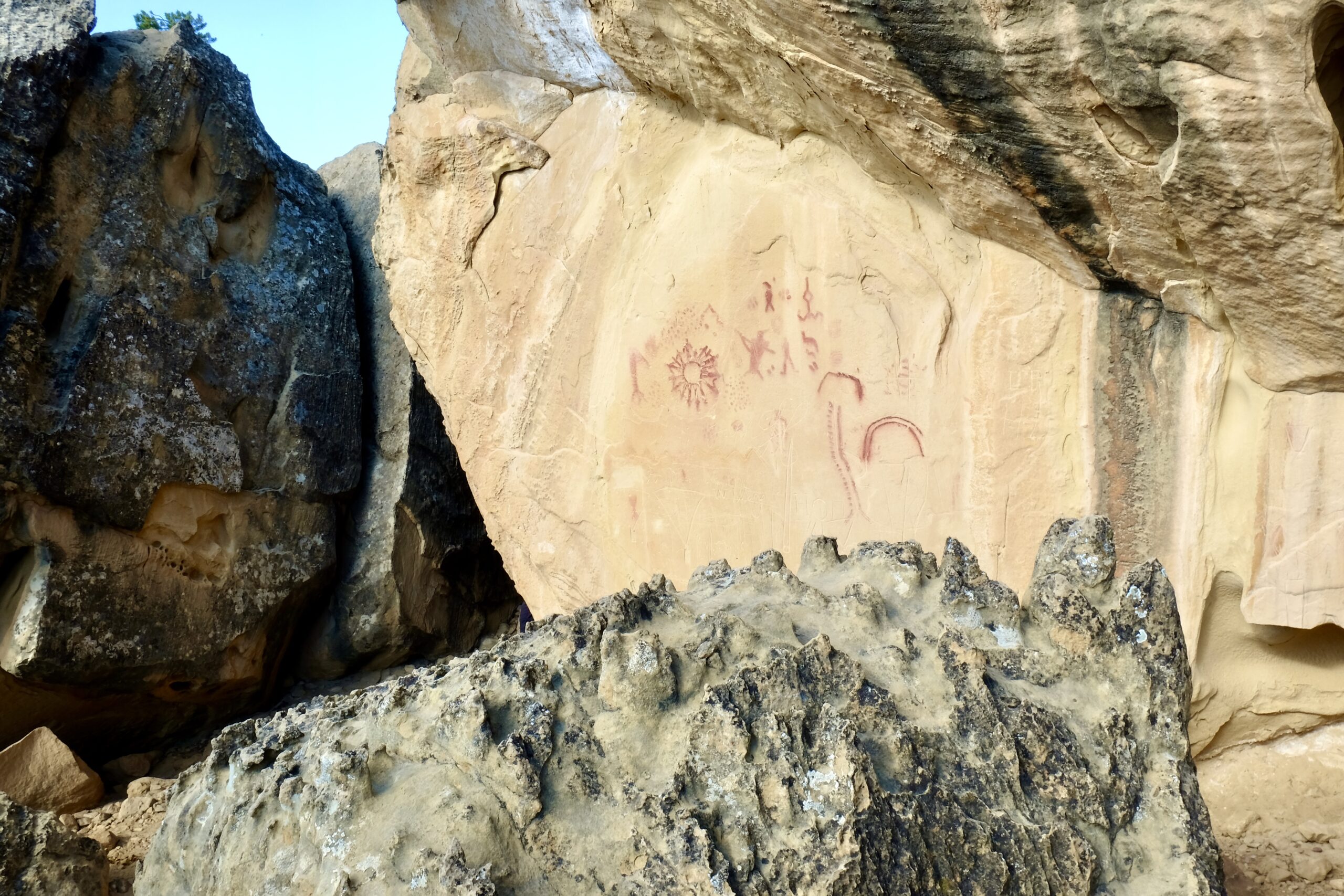Coming across a panel of artwork painted or carved into the cliff face always feels special.
This panel of petroglyphs is at the base of the cliffs overlooking Fruita, in Capitol Reef National Reef National Park and was created by the Fremont People, who were thought to have lived there from about 300 to 1300 CE.

The others in this post, while not exactly secret, are not within National Park boundaries with boardwalks and viewing platforms to protect them, so I’ll be a little coy about their locations, because people are monsters.
Most of the rock art I’ve seen has been petroglyphs–images created by carving into the rock. This trip we also saw some images painted onto the rock. I don’t know who painted this circle of figures holding hand, or when, or what it meant to them, it evokes for me a sense of community and strength and support that resonates across cultures, geographies, and centuries that separate me from the painter.
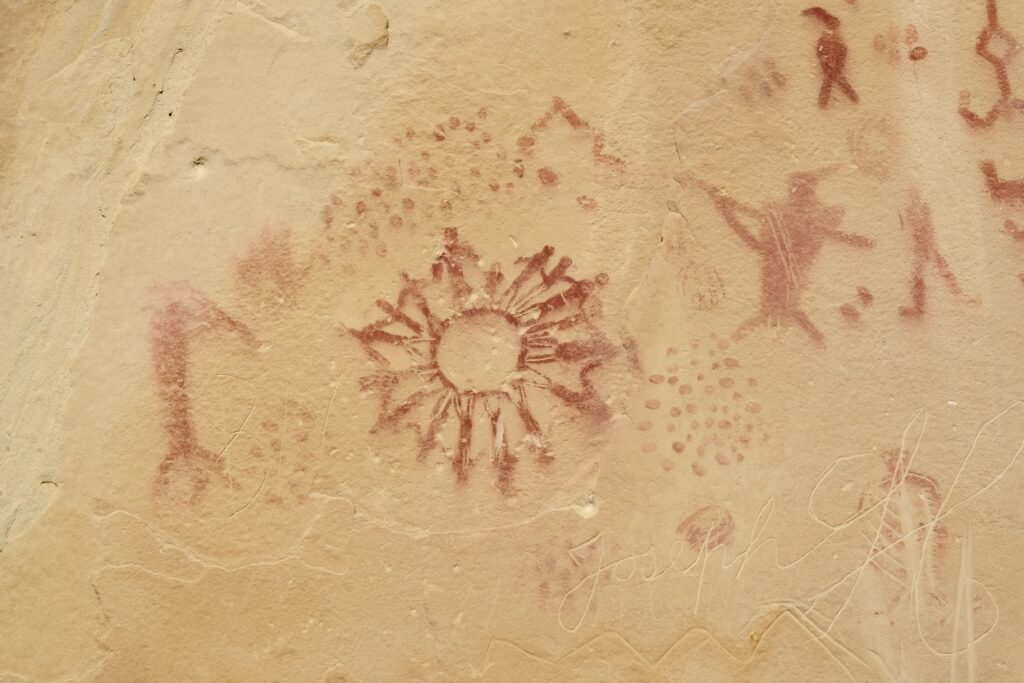
I wonder though what was in Joseph H’s mind when he scratched his signature through the panel.
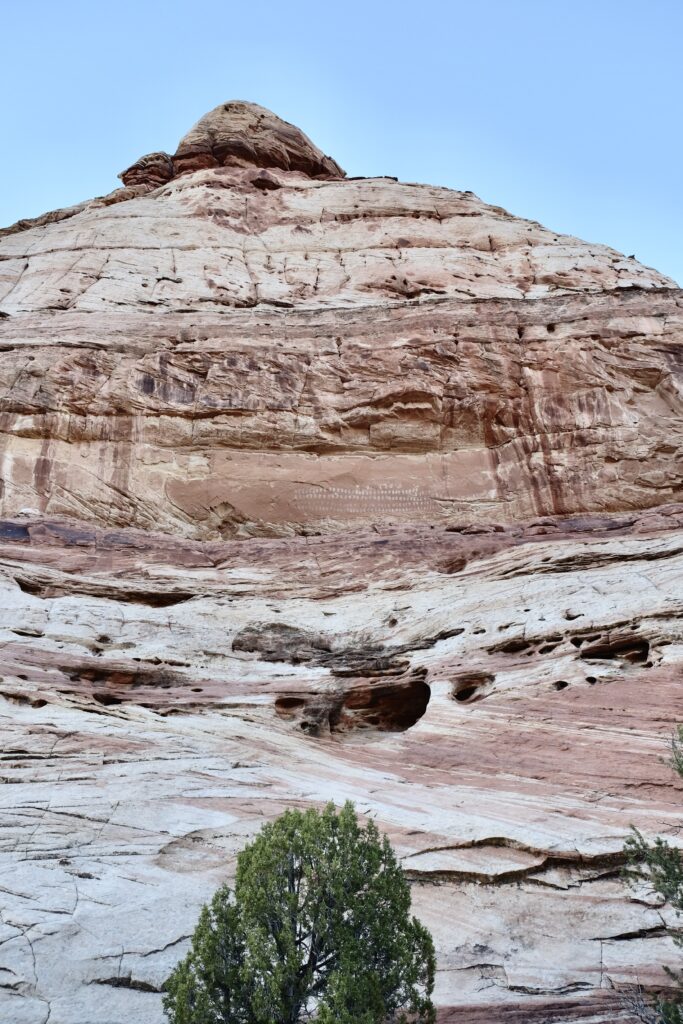
In another site not too far away, somebody made 162 handprints in a rocky alcove high above the valley.
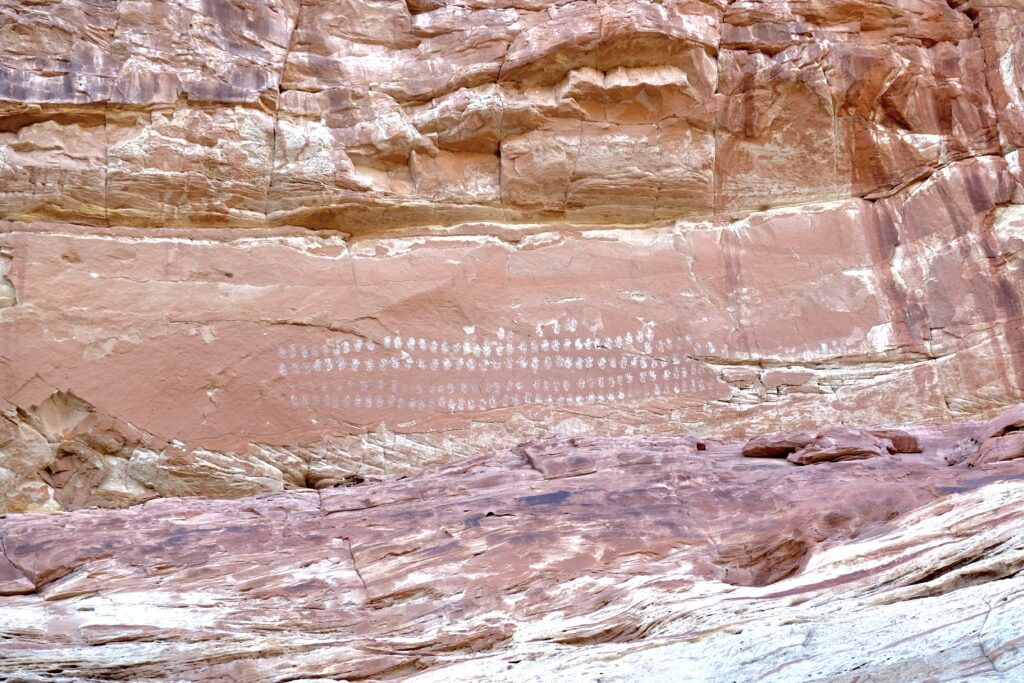
Nearby, petroglyphs cut into the desert varnish show anthropomorphic and abstract figures. The scale is hard to judge especially from photos, but I think the figures are nearly human sized. I wonder if the ledge at their feet was any wider when they were first carved.
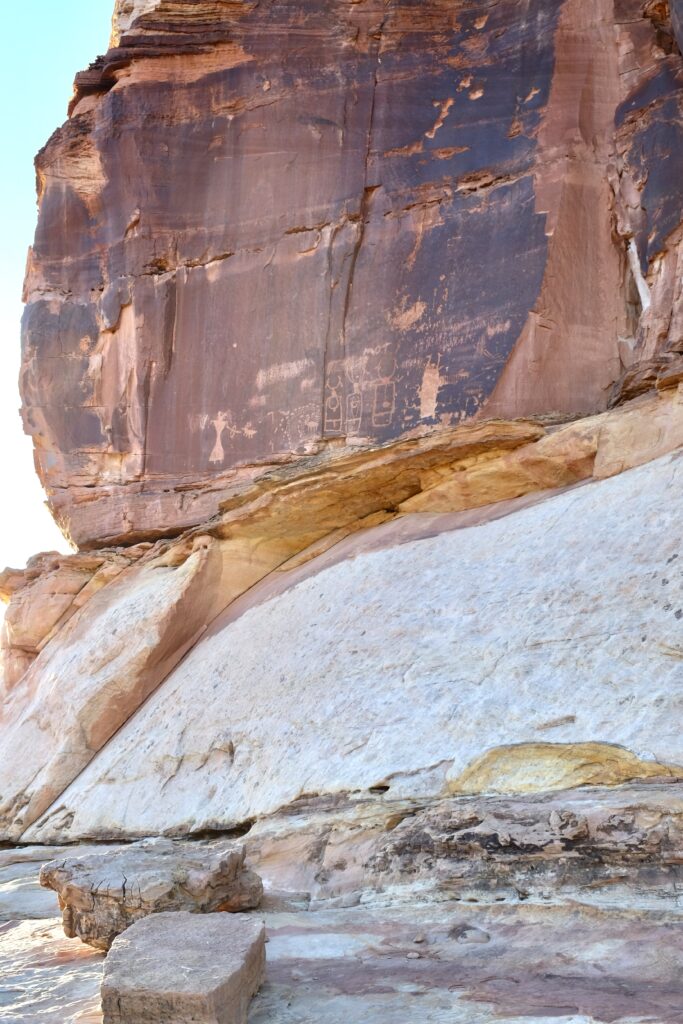
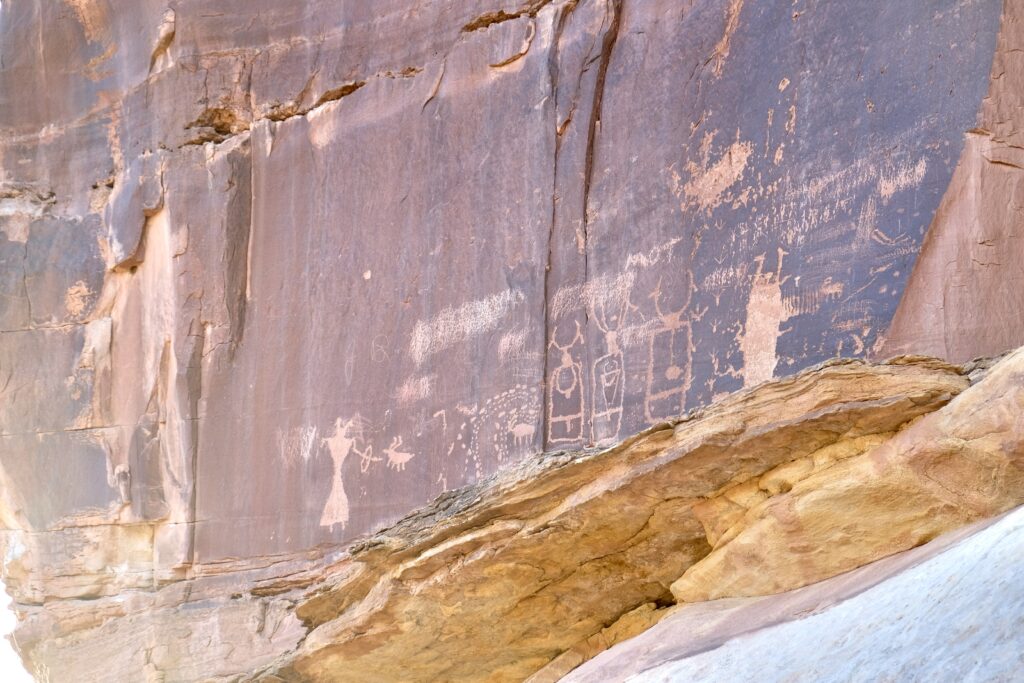
The abstract and anthropomorphic figures are fascinating and a little mysterious, but I’m always charmed by the depictions of animals
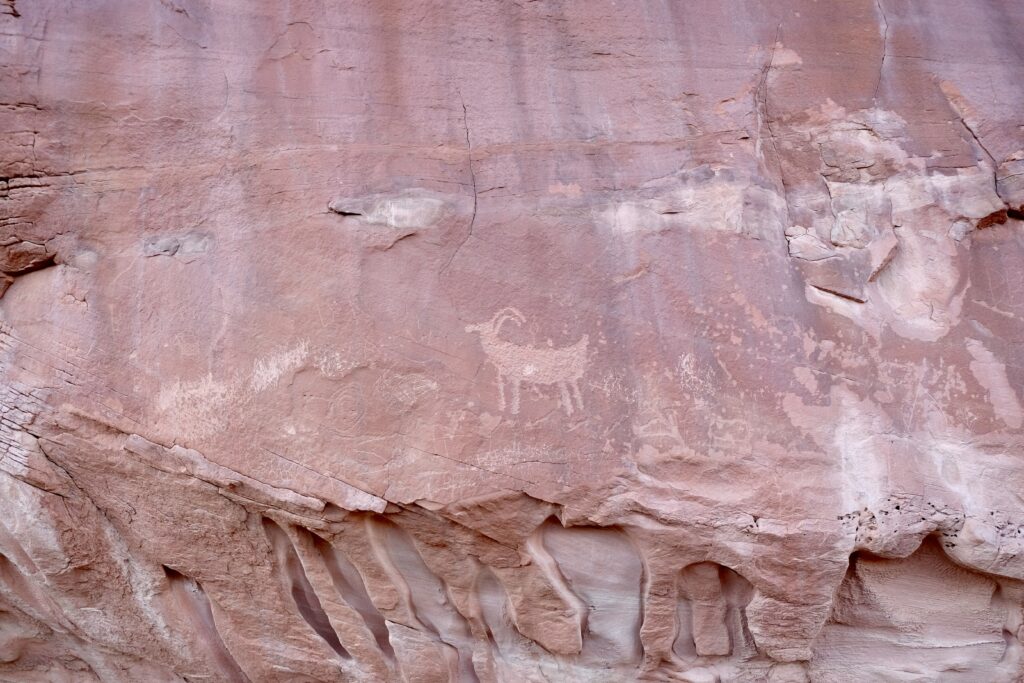
Clearly I’m not the only one who loves petroglyph animals– I’m just glad the vandals who started to carve these sprightly sheep off the cliff didn’t succeed. I like to imagine they were caught in the act and faced the legal consequences of their vandalism, but like so much else about petroglyph sites I can only speculate about their motivations, their history, and their fate.
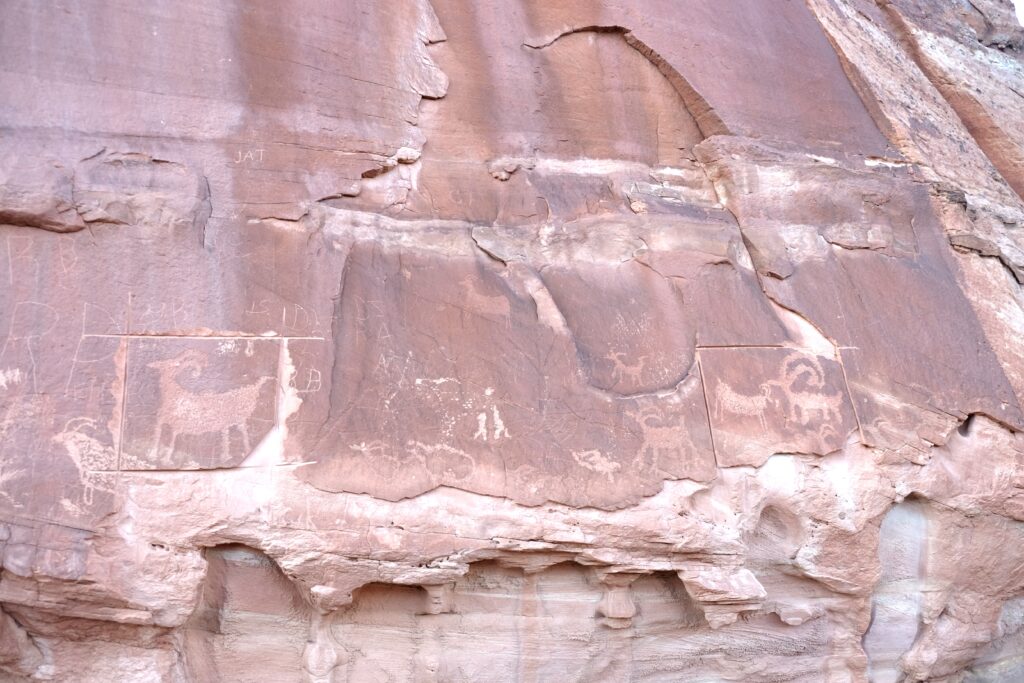
People are monsters. This is why we can’t have nice things.
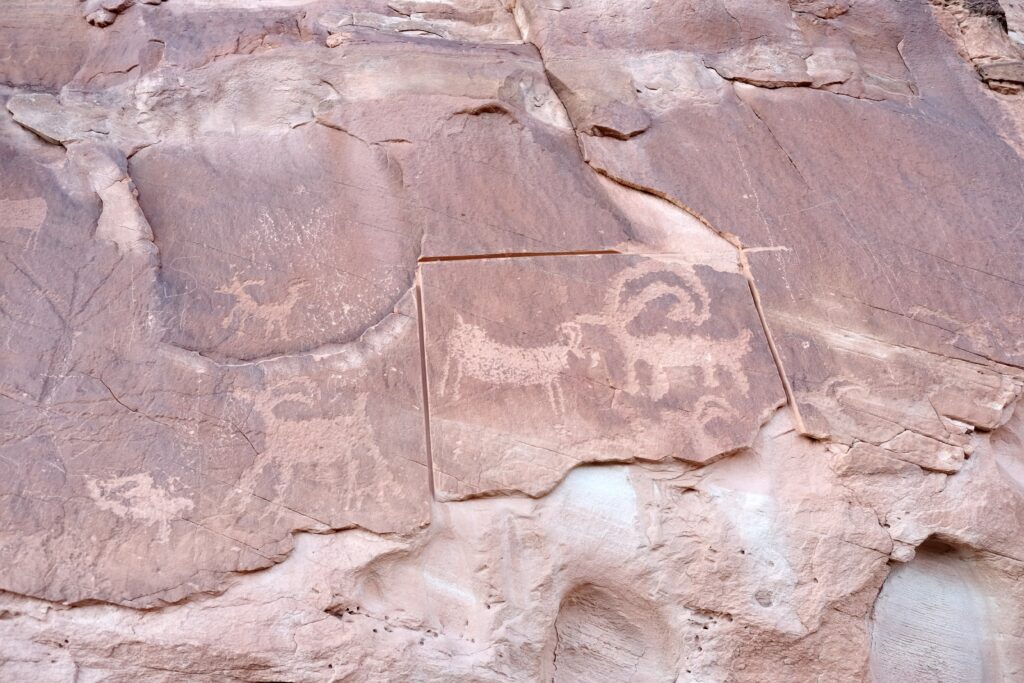
Does this belong in a museum? I’ve seen in museums similar fragments carved out and put on display. To me the answer is no, because the art is part of the landscape and the landscape is part of the art, and separating one from the other diminishes both. There is something very special about a petroglyph in the landscape where it was carved, by hand, so long ago. What was it about this particular alcove or this cliff face unlike all the others?
Museums do have two benefits: security and accessibility. It’s impossible to protect every petroglyph site scattered across the country– even the ones in national parks and national monuments don’t have a ranger looking after them all the time to prevent purposeful or ignorant damage. Many of these sites are in locations that can only be reached by fit and able people– should they be removed and reassembled somewhere more accessible? Accessibility doesn’t need to mean removing the petroglyphs from their original site: the boardwalks and viewing platforms for the Fremont Culture Petroglyphs in Capitol Reef are designed to keep people from getting too close and also and provide access to people regardless of their ability to hike over rugged terrain. This solution doesn’t fit all sites, but I’m grateful for the efforts of the park service to remove barriers to access where the do.

